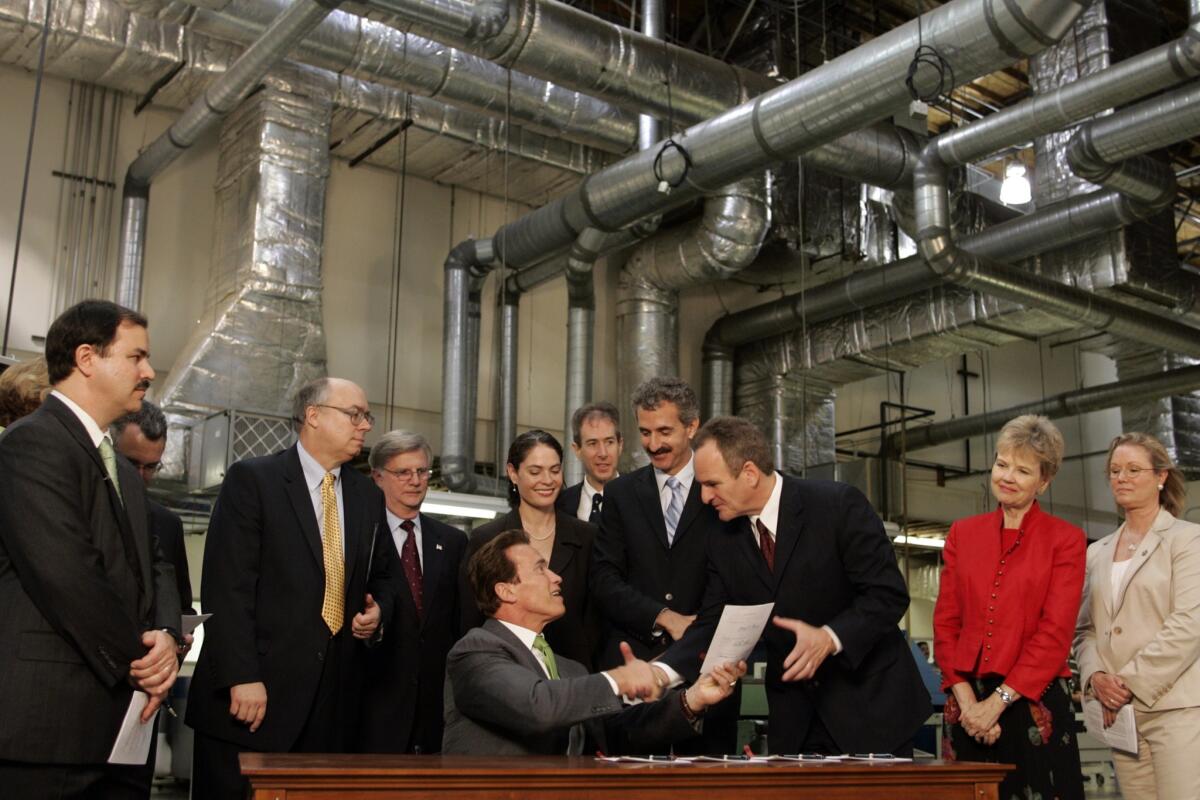California picks first products for ‘green chemistry’ screening

- Share via
SACRAMENTO — Eager to attack more hazardous household products, state officials went public Thursday with a first list of consumer products that might need to be reformulated or pulled from retailers’ shelves altogether.
As part of its unfolding “green chemistry” program, the state Department of Toxic Substances Control identified three groups of goods as priority candidates for action.
The first ones contain hazardous compounds with unfamiliar chemical names that could pose dangers to people or the environment, officials said. They include:
•Tris phosphate, or TDCPP, used in children’s foam padded sleeping products — such as nap mats with polyurethane foam — as a fire retardant. It is a known carcinogen.
•Spray polyurethane foam containing unreacted diisocyanates, an insulation product that can cause severe asthma for installers and do-it-yourselfers when it is still wet.
•Paint and varnish strippers and surface cleaners with methylene chloride, used to remove old paint and varnish. It is linked to cancer and many other health problems.
Manufacturers over the next 18 months will be required to analyze extensively the three designated priority products to see if they can come up with safer alternatives.
The new program — the first of its kind — “requires manufacturers to answer the question: Is it necessary to make my product with the toxic chemical in it?” said Debbie Raphael, the Toxic Substances Control director.
Manufacturers would then be required to conduct a scientific analysis to see whether safer chemicals could be used that would still be effective or whether no practical substitute for the dangerous compound is available.
Environmentalists welcomed the state’s action, particularly the focus on sleeping mats.
“Many companies are voluntarily moving away from hazardous materials but ultimately legal requirements are essential to ensure that all products are safe and all businesses are competing on a level playing field,” said Michael Green, executive director of the Center for Environmental Health in Oakland.
The American Chemistry Council, a Washington trade group, called the state’s new program an “untested regulatory and scientific analysis process” and stressed that “being included on this list does not mean that the state has determined there is a risk of harm posed by the use of these products.”
The state’s green chemistry initiative got underway in 2008 under then-Gov. Arnold Schwarzenegger with passage by the Legislature of a pair of bills.
The idea was to abandon a piecemeal approach which focused on the banning of specific chemicals from particular products, such as bisphenol A in baby bottles and sippy cups and fire retardants in children’s pajamas.
But planning stalled amid squabbling between industry and environmentalists. The regulation-writing process was restarted in 2010 at the order of incoming Gov. Jerry Brown.
State environmental protection officials now are trying a more systematic approach. First, regulators drew up a list of 1,100 potentially dangerous chemicals. The latest step involves identifying families of products, starting with the sleeping mats, foam insulation and paint strippers. Regulators expect to analyze and make rulings on three to five types of products each year.
Those could include common consumer goods such as nail polish that contains toluene, a possible reproductive hazard; carpet adhesive with formaldehyde, a carcinogen; and mercury in fluorescent lights, Raphael said.
The goal, regulators say, is to reduce toxic chemicals in consumer products, to encourage manufacturers and retailers to make and sell safer cleaners, cosmetics and other common household items and to provide shoppers with information they need.
The state’s vetting of priority products hopefully will provide more clarity and more transparency about what chemicals could come into contact with kids at child-care centers operated by her nonprofit, the Bay Area Hispano Institute for Advancement Inc., Executive Director Beatriz Leyva-Cutler said.
“We definitely need to know,” she said.
More to Read
Inside the business of entertainment
The Wide Shot brings you news, analysis and insights on everything from streaming wars to production — and what it all means for the future.
You may occasionally receive promotional content from the Los Angeles Times.










